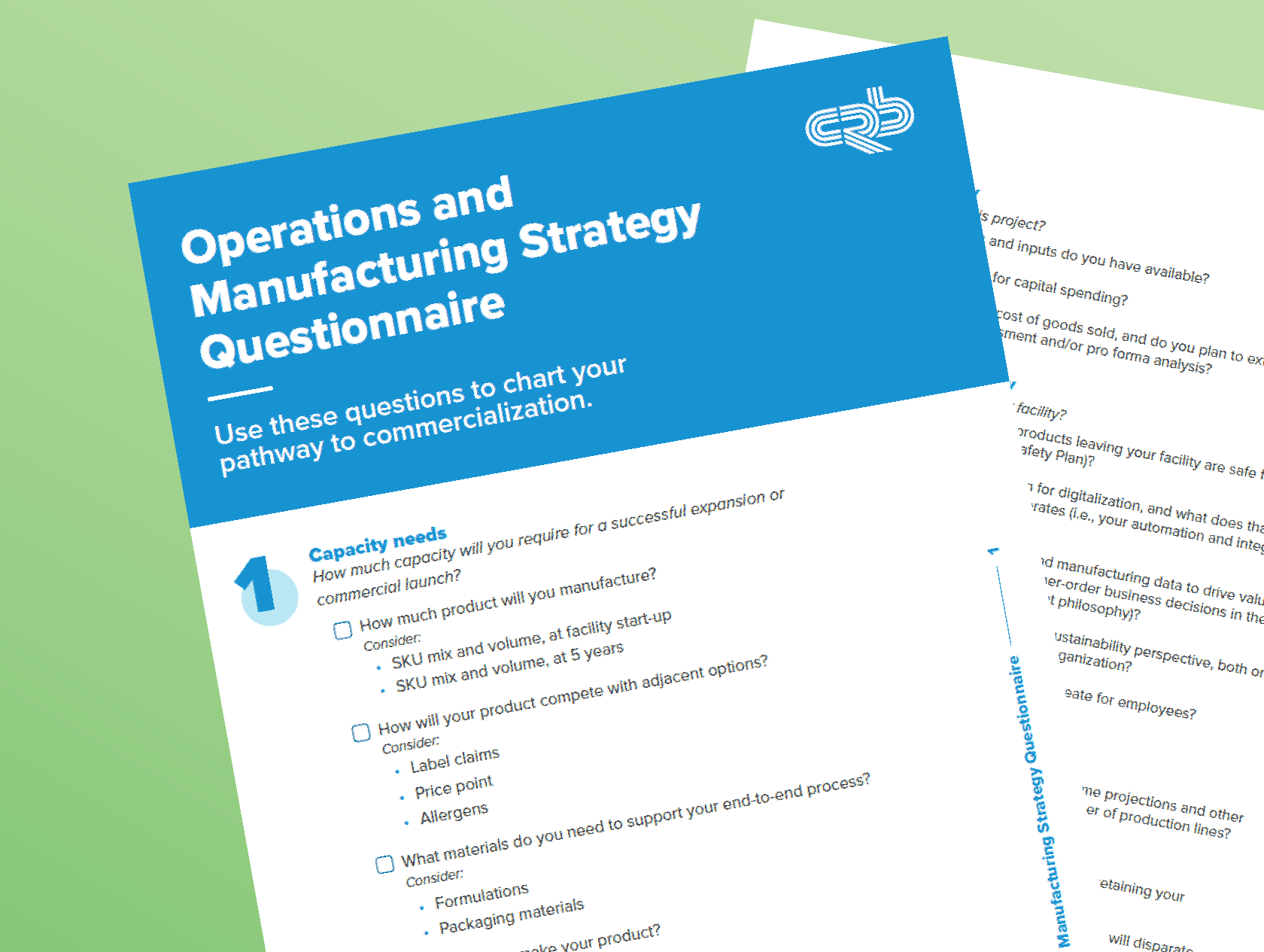Key deliverables
Volume projection – How much product will you manufacture?
Real-world questions and implications:
- An accurate volume projection is mission-critical to everything from estimating long-term revenue to planning adequate parking at your facility, and each macro and micro decision in between.
- Intuition and existing market data both play a role in determining volume projections. The former is a matter of bringing the right expertise to the table. For the latter, you can study existing or adjacent products to estimate your potential market share, work with retailers to gauge interest via Letters of Intent, and leverage industry experts to develop insight-driven demand forecasts.
- To ensure that volume projections are accurate and well supported, you need input and buy-in from across your organization, so that everyone—your executive leaders, your operations team, your sales representatives—is committed to that target.
- Even in the best circumstances, accurate projections can be difficult to achieve. But working towards alignment from the start sets your team up for success throughout the capital project, and helps everyone work together to achieve those projections after the new production assets are on-line. Without this early alignment, your company could miss these projections, which can adversely impact your margin. Or you could miss out on the opportunity to sell significantly more, costing you additional revenue and profit.
Product attributes and shelf set target – How will your product compete with adjacent options?
Real-world questions and implications:
- Every decision you make about your product’s ingredients, presentation, label claims, and packaging has the potential to impact your facility design.
- For example, will you differentiate your product with a gluten-free claim and a lower caloric content than competing products? Does your recipe support these claims while meeting your target shelf life? Will you offer a single packaging option or a variety of SKUs to attract both bulk shoppers and one-time snackers, or to meet the criteria of different retailers?
- Each of these decisions has a cascading effect on critical factors such as your raw material needs, your process design, your facility’s cross-contamination management strategy, and more.
- Your product’s attributes will also affect where your product appears in a store, which impacts the price you can charge and how much of it will sell.
- Consider that product with a gluten-free claim, which we mentioned earlier. If it’s a gluten-free bread that’s shelved with other bread, it may benefit from high traffic in that aisle and stand out against the competition. But customers will compare its price to the other bread around it, so you’ll need to make sure any premium you charge is palatable.
Bill of materials – What materials do you need to support your end-to-end process?
Real-world questions and implications:
- You’ll need to understand which raw ingredients go into your product. This is critical to making a delicious product and supporting the claims and nutritional values on your label.
- If you’re planning to meet that lower caloric product mentioned earlier, you’ll need to balance the calories of your ingredients with the taste, texture and serving size that makes your consumers happy.
- In addition to raw ingredients, are there special packaging materials to consider? Will you need stand-up pouches for convenience? A composite can to keep your product from breaking during transport? A foil liner to prevent spoilage?
Process definition – How will you make your product?
Real-world questions and implications:
- How will you incorporate advancements in your process, or new ingredients? The more specific you can get, the better prepared you’ll be for rapid integration. And have you run your process on equipment that’s similar to the scale you’ll run in production?
- Imagine you’re entering the canned soup market, for example. Will you need a process for peeling and chopping potatoes, in the case of a chowder? Or will you need a pasta extruder to manufacture minestrone? These depend on very different processes. Understanding those differences at a granular level before you begin designing and building a manufacturing line is key. And you’ll want to make sure that your large-scale extruder supports the same quality of pasta that you get from the kitchen-scale extruder that you may have used to develop your recipe.
- Do you understand which processing conditions give you the best product, at the yield you need?
- Will you handle your full manufacturing process in-house, or is there a business case for outsourcing upstream steps? A small-scale soup manufacturer, for example, may consider contracting their blending process to their spice supplier, where the spice blend is likely depleted and replenished more frequently (and is therefore more fresh), and all the necessary equipment is readily available.
Supply chain assessment – Who will supply your necessary materials?
Real-world questions and implications:
- A large company may use this assessment as a key factor in choosing where to locate a new facility in their network. By building closer to key suppliers, you can reduce logistical complexity and transportation costs. In fact, some food ingredient manufacturers choose to locate on the same campus as their key supplier of raw materials.
- You also want to check that your raw ingredients are available on the scale that you need.
- Consider launching a new functional beverage. You might look to add a highly novel ingredient to stand out on the shelf, but novel ingredients are often rare, making them next to impossible to source in a safe and reliable way.
















